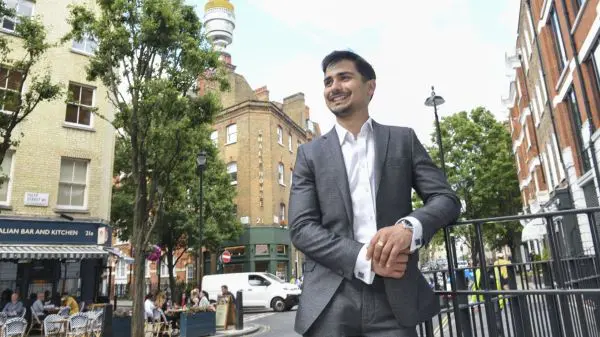We Built This #3: Adam Denton on BT Tower, London
Posted on: 25 July, 2024

In the third feature of our We Built This series, we joined Adam Denton, an Apprentice at Colliers and Student Trustee at UCEM, to discuss his connection to the BT Tower in London.
From residential houses and urban spaces to bridges, towers and skyscrapers, the products of the built environment affect everyone on the planet and leave a lasting legacy that can inspire people for generations to come.
As part of Be Part of the Change, we’re talking to built environment professionals across the sector to celebrate their incredible achievements and encourage new people to join our sector. We’re asking each member of the sector to tell us about the buildings, communities and infrastructure projects that inspire them or they have been a part of in the UK and across the world.
For our third We Built This piece we’re joined by Adam Denton, Apprentice at Colliers and Student Trustee at UCEM.
We talked to Adam Denton about BT Tower, in London
 Which building is this?
Which building is this?
This is the famous BT Tower in London. It’s located in Fitzrovia which is right in the heart of the Capital.
What do you love about it?
It’s actually not so much the building itself that I love, although it is an iconic landmark. I chose it because I find it fascinating as an example of how real estate evolves over time.
Originally, it was built as a government enterprise to serve the purpose of being a communications tower – and the big screens at the top that show the news today are a continuation of that. But after it transitioned to private ownership, it was turned into offices. It’s still the headquarters of one of the biggest companies in the UK, and in its next phase of life for its current owners, it will hopefully become a hotel.
What’s your connection to the building?
The heritage, really. The BT Tower is an outstanding example of 1960s architecture and the fact that it’s Grade II listed shows it’s something worth protecting.
It’s also worth noting that for buildings like these, which were constructed before we were really thinking about Environmental, Social and Governance (ESG), it’s more carbon efficient to repurpose the building than to rip it down. So there are lots of reasons really to respect the heritage of the building and to make the most of its notable presence.
What do you think makes this a significant building?

It’s an example of how society changes and the building has had additions to it, but fundamentally the structure is the same. Even moving forward with it becoming a hotel, it’s showing how it’s adapting to the post-COVID environment, where there’s not as much demand for office space, but there is always a steady stream of tourists.
And because London continues to be a major destination, the BT Tower will continue to be significant, and an indelible part of the cityscape.
To find out more about Be Part of the Change and get involved, visit the homepage. If you’d like to get in touch with our Student Ambassadors for EDI, email outreachandinclusion@ucem.ac.uk
To read the previous entry in our We Built This campaign, click here.



 Which building is this?
Which building is this?

